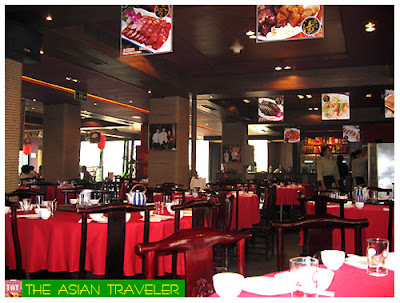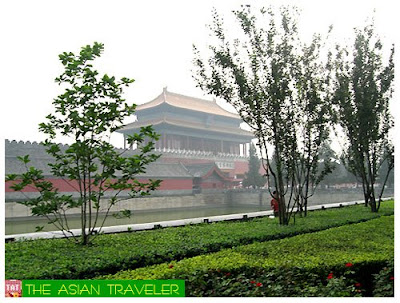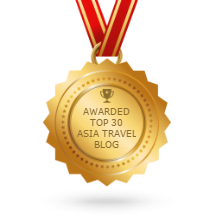Part VII: Dare to Enter the Forbidden City
SHARE THIS ARTICLE:At lunchtime, we met our two English-speaking tour guides, Cristina and Jane together with the rest of our tour mates who just arrived from Manila at Jin Ding Xuan Restaurant (we were ahead of them one day before the scheduled date).


After a heavy lunch we went to the Forbidden City. We entered through the Gate of Divine Prowess and walked for more than an hour from the north to south end (Meridian Gate) of this huge complex.

I can’t believe that I actually entered a once known forbidden place for commoners. It was called the Forbidden City because it was impermissible for ordinary people or even uninvited nobility to enter its sacred precincts. Anyone who dares to trespass is put to death. It was also prohibited for any building in Beijing to be constructed higher than the buildings in the Forbidden City.

The walls encompass an area almost 8 million square feet, or 168 acres--about the size of 140 football fields. "Hmm... I wonder how the Emperors lived and ruled the immense country from within its walls". The complex houses 9,999 rooms; nine is considered a particularly propitious number in Chinese numerology.


The red color of the walls symbolizes happiness and auspiciousness.

In the middle of the hall is the ornately carver imperial throne. During the Ming and Quing dynasties it was the center of the court activities. All the important ceremonies such as crowning, imperial birthdays, royal weddings, etc. are held.
The Meridian Gate is the main gate south of the Forbidden City. It was a central point for ceremonial celebrations as well as for official communication from the emperor and the imperial courts. The Meridian Gate is 35.6 meters high, with five openings, and is the largest and main gate of the Forbidden City.
the Meridian Gate as seen from inside
The arches of the Golden River bridge
There were strict rules to follow when people entered the Forbidden City. Entering through the central opening was the Emperors' exclusive privilege; their empresses were allowed to go through the opening only once - on their wedding day. The top three examinees in the national examinations, presided by emperors on the final stage, would be honored to strut through the arched hole after receiving emperors' interview. The east opening was for the ministers while the west opening was for the royal family. The other openings were for petty officials. Ordinary people were forbidden to enter the city during those days.
I still remember the movie “The Last Emperor” (1987). It was the first feature film ever authorized by the government of the People's Republic of China to film in the Forbidden City. It's the life story of Aisin-Gioro Puyi, the last Emperor of China, who ascended the throne at age three. Puyi, continued to live in the palace after his abdication until he was expelled in 1924. It's a very interesting and remarkable story. I fall in love with the classical architecture of Imperial splendor, the pavilions and gates with impressive painted colorful decorations and the magnificent grand sites on this movie.
After Forbidden City, we just had a ten-minute picture taking at the Tiananmen Gate.
 SHARE THIS!
SHARE THIS! 




























0 comments